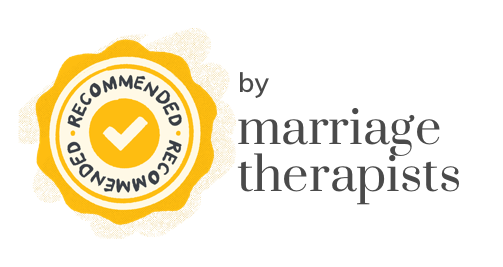
Becoming A Better Listener: A Step-by- Step Guide to Active Listening
As basic as it sounds, developing good listening skills is one of the most valuable things you can do for your relationships - whether this is romantic, friendship or work. One of the biggest mistakes we can make is assuming that our listening skills are fine and don’t need work - when in reality, everyone can benefit from developing their skills in this area. If you’ve ever gone to a therapist or coach, and left the session feeling truly heard and validated - it is likely that they were using some key elements of active listening, and focusing on building up that sense of understanding, concern and interest.
So, what is active listening? Essentially it involves paying full attention to what someone is saying, and checking in to make sure you understand key points. One useful way of understanding what active listening is might be to consider what it is not - if you’ve ever tried talking to someone who is distracted by their phone, or clearly not paying attention - this is the opposite of what we’re trying to achieve. That feeling that you get when you’re talking to someone who isn’t paying attention - frustrated, annoyed, hurt, devalued - is one that is really detrimental to a relationship, and in building up our listening skills, we hope to move away from these emotions, and towards feelings of being understood and being valued by the person you are interacting with.
Convinced? Here are a few active listening skills that therapists and coaches swear by, and which will help to make your next important conversation go to where you want it to.
Reflecting - As easy as it sounds, reflecting back what a person says to them can show that you are listening to them closely, and taking in what they are saying. Reflections have the incredible ability to show people that we are on their side - when they hear a variation of their own words coming out of our mouths, resistance and defensiveness can drop away. This technique is often used by therapists in their first session, as a tool to show clients that they understand and empathise with their experience. For example:
Client: I just feel really unsupported by my partner - I am expected to do so much for them when they are down, but when I’m struggling there is no sympathy or support.
Therapist: So you do a lot for them in terms of support, but when you need them it feels like that support isn’t there - it isn’t reciprocated.
When having a difficult and challenging conversation (eg. talking to someone about a behavior you’re worried about, giving some negative feedback), if you can try and reflect at the beginning of the conversation, this tends to help the person to relax and let down their walls - as part of them (unconsciously) understands that you are on their side, or at the very least trying to put yourself in their shoes. If you aim for at least 3 reflections, you are off to a good start! It also goes without saying that it is best to use your own words rather than repeating back what they have said - make sure you have the key points included.
Get step-by-step guides to navigating tough convos, unlimited 1-on-1 coaching and more relationship help with our award winning relationship training app. Try free for 7 days.
Summarising - Similar to reflections, this is a ridiculously easy tool to help someone feel heard. This involves drawing together the threads of the conversation at different points, in your own words. This is powerful because the person you’re talking to might not have done this themselves (we don’t tend to summarise our internal monologues!), and it can be a powerful experience to have all of your concerns reflected back to you. Just like with reflecting, summarising what someone has said to you is evidence that you are listening carefully to them, and that you are interested in engaging in what they have to say. A summary is a kind of ‘call to action’ in some ways, since it allows us to draw together all the parts of the issue. For example:
Therapist: So, from what you’ve told me, there are a number of issues here. Firstly, you’re feeling like your partner withdraws from you when they’re stressed - and also they are not willing to offer much support when you’re not doing well yourself. And finally, when you try and discuss it, the conversation tends to either shut down or escalate into an argument - is that right?
Minimal Encouragers - This big word really just means saying ‘uh-huh’ and whatever else you do to show you’re listening and want the person to continue. As you can imagine, these are even more important when we are speaking over the phone or via text, where body language and eye contact are less obvious. If you are wondering why this is so important, cast your mind back to when you’ve been talking on the phone to someone and there is complete silence - you can’t be sure whether you’ve been disconnected, or they aren’t listening to you. We tend to use minimal encouragers naturally in our communication, but it is useful to pay close attention to them when we are having these important conversations - just like reflections, they convey that we are listening closely, want the person to continue talking, and are receptive to what they are saying (even if we don’t necessarily agree).
Let our relationship coaches put together a free customized lesson plan to help you master your communication skills. Install now.
Body Language - Have you ever tried to open up to someone who was sitting with their back to you, or who was avoiding your eyes? It is almost impossible to get into the flow of conversation with someone who is either giving you hostile signals (crossed arms, frowning, standing over you) or completely blanking you (avoiding eye contact, turning their back, turning their face away from yours). When we see threatening body language, our ‘survival’ part of our brain is activated and we go into ‘fight or flight’ - and this is an emotional state that can override our attempts to communicate effectively. It is for this reason that body language might be one of the most important parts of active listening - and if we can get our body language right, it gives us a good chance of having an open and productive conversation. Again, this only applies to face to face encounters - if you’re using text or phone, you’ll need to work on the minimal encouragers to do this work. Some key things to consider are:
- How are you sitting? Posture and direction make a big difference - ideally you will be facing the speaker, perhaps slightly at an angle, with an open posture (ie. not crossed arms or hunched over). Depending on the setup, the person should be able to see your face and recognise that your body language is non-threatening and relaxed.
- What are you doing with your face? Eye contact is key here, but of course we don’t want to maintain constant eye contact - that is both creepy and potentially intimidating! An interested and calm expression, with appropriate eye contact, means you won’t be distracting them as they talk. You might be nodding or keeping your eyes on their face to monitor their emotional state.
- Are you mirroring them? One useful skill when it comes to body language is mirroring, where we might adopt a similar posture or expression to the person who is talking to us. Most of us do this unconsciously (eg. when we talk to a sad person, we aren’t likely to be overly cheerful, but talking to an excited or happy person and we are likely to kick it up a notch), but if we can be somewhat deliberate about this when listening, it again sends signals that we are in sync. This might be adopting a similar posture (eg. crossing legs, or leaning back in the chair), or adjusting our speed of talking or energy level to match theirs (eg. if someone talks slowly and deliberately, we might want to slow down a bit too). We’ve probably all seen someone try and mirror someone and come across as downright creepy and strange - and this is the last thing you want to be doing. The idea is more that we are trying to get in sync with the person and show that we are ready to meet them where they are at - and that they can feel comfortable opening up to us.
In conclusion - active listening is quite a bit more complicated than it appears at first - but it is definitely a skill to develop. An important caveat is that active listening can be difficult to follow while the person is saying something we don’t agree with - but this is actually when it is at its most valuable. The more we can get someone to talk about an issue, and encourage them to open up and engage in a discussion, the better chance we have of getting our own point across and engaging in an actual conversation - instead of a fight or argument. Using active listening appropriately means that we give ourselves the chance to clarify and absorb the other person’s viewpoint, as well as allow the other person the chance to articulate what they want to say, and start to consider our point of view.
Becoming a better listener takes time and serious effort. Luckily, relationship communication help is just a click away. Get started with the #1 relationship training app free for 7 days.









